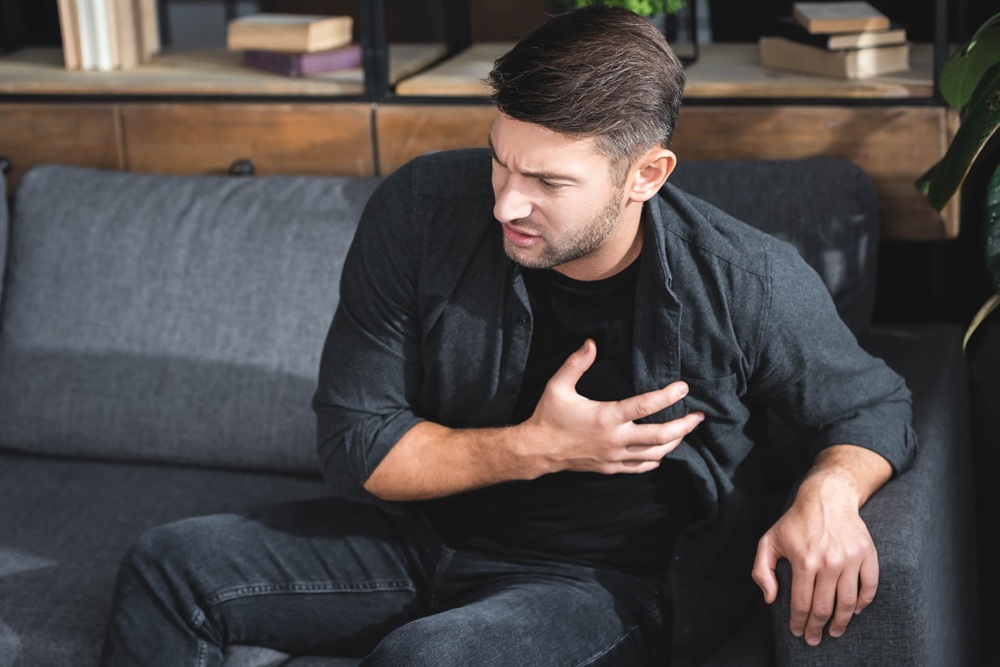Adults, teens, and even children can suffer from anxiety disorders. One type of anxiety characterized by panic attacks and the fear of more panic attacks is known as panic disorder (with or without agoraphobia).
Panic Disorder and Its Symptoms
Panic disorder is a potentially debilitating condition that affects between 2-3% of adults in the United States each year. It’s most common in young adults, but can affect individuals of all ages.
The main symptom of panic disorder is recurrent unexpected panic attacks. A panic attack is a sudden period of intense anxiety and panic sensations that peak within minutes. Common sensations include shortness of breath, elevated heart rate, disorientation, sweating, trembling, heart palpitations, nausea, chest pain, lightheadedness, hot/cold flashes, tingling, and others.
Panic disorder is more than just having panic attacks. People with panic disorder worry about having future panic attacks, and how they might be harmful to them. They also avoid activities and situations that may cause panic (like exercise). Many people also start doing things that make them feel safe or protected from panic (like carrying a bottle of medication) — these are called safety behaviors.
Many people experience panic attacks (about 11% of adults in the United States each year), but not everyone who experiences panic attacks has panic disorder. People with panic disorder experience significant and enduring distress and disruption in their daily lives from their symptoms.
What Causes Panic Disorder?
Panic attacks come from our fight-or-flight response. The fight-or-flight response is intense, but it’s actually helpful! It helps us survive.
When something scares or frightens us, our bodies react to prepare us either to run away or fight for our survival. Our minds go on high alert and keep looking out for the thing that scared us. These natural reactions keep us safe from dangers and threats.
But the fight-or-flight response can also lead to panic disorder. When we fear panic attacks:
- Going on high alert increases and prolongs anxiety and worry about when panic might strike again. Staying vigilant can actually make our brains more sensitive to panic over time, which makes it easier for a panic attack to start.
- Trying to escape panic leads to avoiding activities or situations that can cause panic as well as safety behaviors. These reactions can make us feel safe in the short term, but in the longer term, they make panic attacks feel even scarier and more out of control when they strike.
Panic attacks are scary, so it makes sense that our bodies and minds respond to them like any other threat. But no matter how hard we try, we can’t prevent or avoid having panic attacks altogether because panic symptoms come from within our bodies. Panic attacks aren’t actually dangerous or threatening. Worry about panic and avoidance behaviors just keep panic disorder symptoms going strong.
Panic Disorder with Agoraphobia
Agoraphobia is a fear of situations such as:
- being in open spaces (like a supermarket)
- riding public transportation
- being in enclosed spaces (like an elevator)
- being in a crowd
- standing in line
- being outside the home alone
- being in any situation where it might be hard to escape or get help if needed.
A common reason someone would worry about needing to escape or get help in these situations is having a panic attack. However, people can have discomfort in these situations for other reasons too.
Some people with panic disorder also experience agoraphobia, but they aren’t the same thing. People with panic disorder avoid activities or situations that may cause panic. This avoidance can turn those situations into triggers for fear and anxiety in and of themselves, which leads to agoraphobia.
Panic Disorder without Agoraphobia
On the other hand, some people with panic disorder don’t experience agoraphobia. For example, someone could avoid an activity (like watching horror movies) that they fear could bring on a panic attack, but not fear going to places like movie theaters. Panic disorder and agoraphobia are two separate conditions that can sometimes be related.
An Example of Panic Disorder
Tyson (not his real name) was watching TV one day when he suddenly started feeling hot, noticed his breathing got faster. His heart started pounding. He felt better about 15 minutes later, so he tried to put the incident out of his mind. But Tyson had another similar episode the next night while watching tv. He decided to give up tv for now and switch to reading in the evenings, but the same feelings came on while he was sitting down to read. The next day, the same feelings came on while he was waiting in line at the store, and he rushed home. Tyson was scared and getting more worried there was something seriously wrong with his health. He asked his sister to go shopping with him in case something like that happened again, and he gave up doing any leisure activities in the evenings.
Tyson saw his physician. She ran some tests and assured Tyson there weren’t any medical concerns. She told him that it sounded like he had been experiencing panic attacks. Tyson felt a little relieved to learn this, but the attacks kept happening and he worried he’d never get rid of them. Before long, Tyson was calling out of work, only going to the store when his sister could join him, and trying desperately to convince himself that it was panic and not something more harmful to his health. His sister encouraged him to seek therapy for his panic attacks.
Note: This is a fictional account created from common experiences reported by individuals with existential panic disorder.
Panic Disorder Treatment Including CBT
Panic attacks are uncomfortable and scary, and panic disorder can be incapacitating. But panic attacks are also harmless and temporary, and panic disorder is treatable. Cognitive-behavioral therapy (CBT) is highly effective in treating panic disorder, as demonstrated in clinical research studies. CBT for panic disorder involves learning skills that lead to long-term symptom relief.
One skill is learning to tolerate and become less reactive to the unpleasant physical sensations that accompany panic. Another skill is changing your thought process to reduce worry about future panic attacks. Another focus of CBT for panic disorder is helping people avoid things less — this helps them reengage in the activities and situations they’ve given up due to panic disorder. Avoidance can supercharge anxiety by robbing us of the chance to try coping with fears in a healthier way.
Medications, such as benzodiazepines (e.g., Klonopin, Xanax), are often prescribed to help manage panic attacks. However, unlike psychological treatment, the benefits of these medications are lost when the medication is discontinued. Additionally, these medications can be habit-forming and do not address the sensitivity to physical sensations that often leads to panic disorder.
If you would like to discuss using cognitive-behavioral therapy to address your panic disorder, please contact us.









